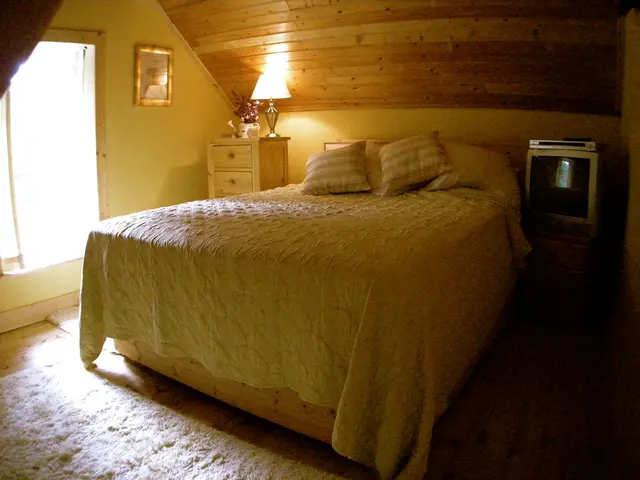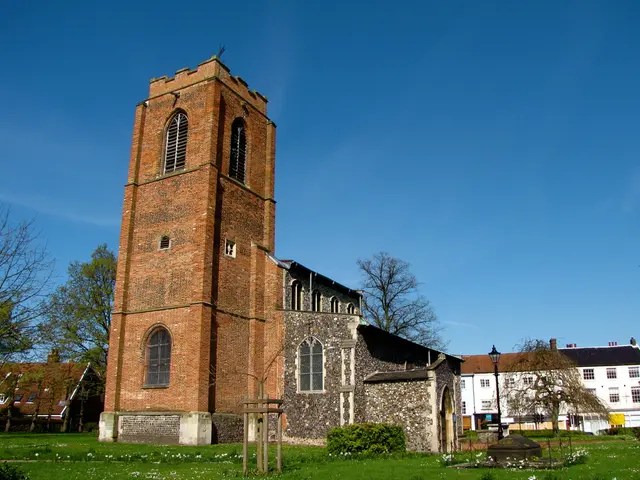Transforming Wasteland into a Lush Retreat: The Bold Renovation of Lake Texcoco
In the heart of Mexico City, a significant transformation is underway. The Lake Texcoco Ecological Park project, an ambitious restoration initiative, is breathing new life into a vast area that was once home to a crucial part of the Aztec civilization.
The project, which began following the cancellation of the new airport (NAICM) planned for this site, aims to restore approximately 12,000 hectares of the former Lake Texcoco bed, creating a vast expanse of public green space. This endeavour is focused on reviving lost ecosystems and addressing the environmental challenges facing Mexico City, such as subsidence caused by groundwater over-extraction.
Mexican architect Inaki Echeverria is leading the charge, envisioning a hybrid ecosystem that seamlessly blends artificial and natural elements to revitalize the Valley of Mexico. The project is a testament to human ingenuity, a demonstration that innovative solutions can pave the way for a more sustainable and harmonious future.
The restored water bodies in the park will help replenish the depleted aquifers beneath Mexico City, mitigating subsidence. The park also aims to combat flooding by rerouting canals, creating seasonal pools, and restoring the natural flow of nine rivers.
The Lake Texcoco Ecological Park project is not just an ecological restoration effort; it's also a response to the community's needs. The area will serve as a haven for birds, insects, and other wildlife, attracting a diverse array of species with over 1.8 million native plants. It will also create jobs for local communities, generating employment through initiatives like native plant nurseries and spirulina algae cultivation.
Moreover, the Texcoco Park may foster new sustainable industries. Traditional practices like salt harvesting and spirulina cultivation will be supported in the park, providing opportunities for local communities while promoting eco-friendly practices.
The project is a beacon of hope, resonating deeply with our desire to reconnect with nature, even in the heart of our bustling cities. It grapples with the complexities of restoring an ecosystem irrevocably altered by human intervention, finding a balance between recreating the past and adapting to the present is crucial.
The Society for Ecological Restoration, Ramsar Convention on Wetlands, and United Nations Environment Programme (UNEP) are involved in the project, ensuring its success and contributing to global efforts in ecological restoration. With a budget of $1 billion, the Texcoco Ecological Park project is poised to become one of the world's largest urban parks.
As the project progresses, the former airport construction zone is being converted into a vast green area that supports ecosystem recovery and serves the community's needs. The rebirth of Lake Texcoco is a testament to human ingenuity and our capacity to rectify past mistakes. The Texcoco Park may serve as a blueprint for future urban restoration efforts that prioritize ecological restoration, employment, and community engagement.
- In the future, the society may look to the Lake Texcoco Ecological Park as a model for urban restoration projects, combining ecological restoration, employment, and community engagement.
- The project, which includes a focus on sustainable living, aims to promote eco-friendly practices through initiatives like native plant nurseries and spirulina algae cultivation.
- The integration of AI and science is expected to play a significant role in the project, with the Society for Ecological Restoration, Ramsar Convention on Wetlands, and United Nations Environment Programme (UNEP) providing experts to ensure its success.
- As learning institutions continue to emphasize the importance of education and self-development in addressing climate-change and environmental issues, the Lake Texcoco Ecological Park could provide valuable field learning experiences within the framework of environmental-science and science-related courses.
- The home and garden segment might also take inspiration from the Lake Texcoco project, with homeowners and landscapers adopting sustainable living techniques and incorporating native plants in their own gardens to promote biodiversity and reduce water consumption.




